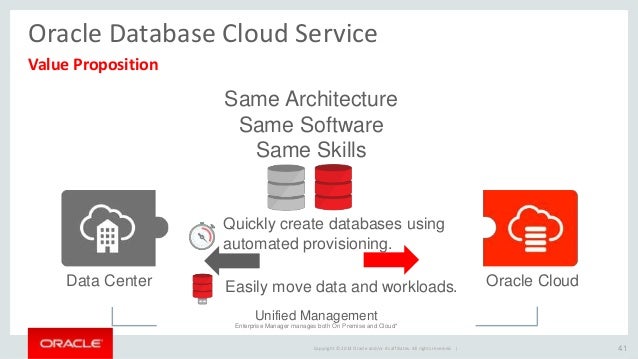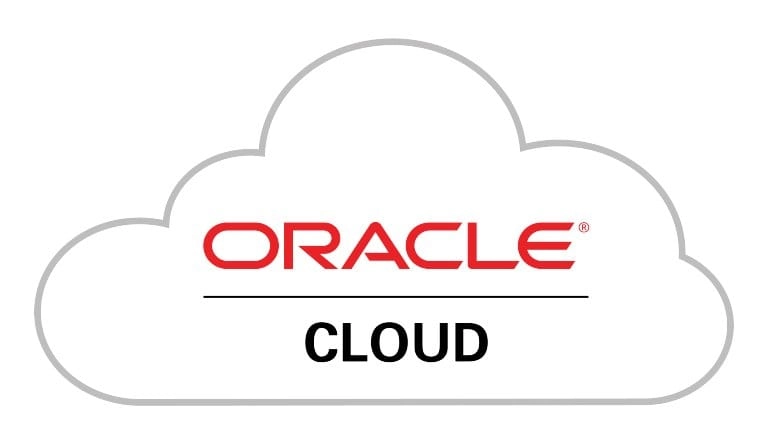What is Oracle Cloud Database and Why Choose It?
Oracle Cloud Database is a family of cloud-based database services provided by Oracle Corporation. These services offer a wide range of database options, including Oracle Autonomous Database and Oracle Exadata Database Cloud Service. The platform is designed to support various workloads, such as transaction processing, data warehousing, and big data analytics. By adopting Oracle Cloud Database, businesses and developers can benefit from features like high scalability, reliability, and security. Moreover, Oracle Cloud Database enables organizations to reduce costs, accelerate innovation, and improve operational efficiency.
Key Features and Capabilities of Oracle Cloud Database
Oracle Cloud Database offers a robust set of features and capabilities that cater to diverse business needs. Its high availability feature ensures minimal downtime and maximum data access, while the disaster recovery option allows for seamless data backup and recovery. Security is another critical aspect of Oracle Cloud Database, with advanced data encryption, access control, and auditing features. These capabilities make Oracle Cloud Database a reliable and secure choice for businesses and developers.
Compared to other cloud databases, Oracle Cloud Database stands out with its comprehensive feature set. For instance, its autonomous capabilities enable automatic database management, including patching, tuning, and backups. This reduces the administrative burden and allows organizations to focus on their core business operations. Furthermore, Oracle Cloud Database supports various database editions, such as Enterprise Edition, Standard Edition, and Express Edition, providing flexibility in choosing the right solution for specific use cases.
How to Migrate to Oracle Cloud Database
Migrating to Oracle Cloud Database involves several steps and considerations. First, assess your current database environment and identify the databases and applications that will be migrated. Next, choose the appropriate migration tools and methods, such as Oracle Cloud Database Migration, Oracle Data Service Integrator, or third-party tools. It is essential to follow best practices, such as performing a thorough data backup and testing the migration process in a non-production environment.
Potential challenges during migration include data compatibility issues, application reconfiguration, and network connectivity. Addressing these challenges requires careful planning, testing, and collaboration between the database, application, and network teams. A phased migration approach, where a small subset of the data is migrated first, can help identify and resolve issues before migrating the entire database.
Here is a step-by-step guide for a smooth migration:
- Assess the current database environment and identify the databases and applications to be migrated.
- Choose the appropriate migration tools and methods.
- Perform a thorough data backup and test the migration process in a non-production environment.
- Address potential challenges, such as data compatibility issues, application reconfiguration, and network connectivity.
- Implement a phased migration approach, migrating a small subset of the data first.
- Monitor and optimize the migrated databases and applications.
Optimizing Performance in Oracle Cloud Database
Oracle Cloud Database offers various strategies for optimizing performance, ensuring that applications run smoothly and efficiently. Here are some tips and strategies for optimizing performance:
- Indexing: Proper indexing is crucial for efficient data retrieval. Identify frequently accessed data and create indexes accordingly. However, avoid over-indexing, as it can negatively impact write performance.
- Query optimization: Analyze and optimize queries to reduce execution time. Use the Oracle SQL Tuning Advisor to identify potential issues and provide recommendations for improving query performance.
- Resource management: Monitor and manage database resources, such as CPU, memory, and I/O, to ensure optimal performance. Oracle Cloud Database provides resource management features, such as database resource pools and server pools, to allocate resources effectively.
Real-life examples and case studies demonstrate the effectiveness of these strategies. For instance, a retail company migrated its e-commerce platform to Oracle Cloud Database and optimized performance by implementing indexing and query optimization techniques. As a result, the company experienced a 50% reduction in query execution time and improved overall application performance.
Oracle Cloud Database: Security and Compliance
Security and compliance are critical factors for organizations when selecting a cloud database. Oracle Cloud Database offers robust security and compliance features to help organizations meet regulatory requirements and protect sensitive data.
- Data encryption: Oracle Cloud Database supports transparent data encryption (TDE) for data at rest and encryption for data in transit. This ensures that data remains secure, both when stored and when transmitted between services.
- Access control: Oracle Cloud Database provides granular access control features, allowing organizations to define and manage user roles and permissions. This ensures that only authorized users have access to specific data and resources.
- Auditing: Oracle Cloud Database offers comprehensive auditing capabilities, enabling organizations to monitor and track user activities, configuration changes, and security-related events. This helps organizations maintain compliance with various regulations and industry standards.
These security and compliance features help organizations meet regulatory requirements, such as GDPR, HIPAA, and PCI-DSS. By choosing Oracle Cloud Database, organizations can rest assured that their data is secure and compliant with industry standards and regulations.
Oracle Cloud Database Pricing and Licensing
Oracle Cloud Database offers flexible pricing and licensing options, making it an attractive choice for businesses and developers. The two primary pricing models are bring-your-own-license (BYOL) and pay-as-you-go.
- Bring-your-own-license (BYOL): This option allows organizations to use their existing Oracle software licenses in the Oracle Cloud. This can result in cost savings, especially for organizations with existing investments in Oracle software.
- Pay-as-you-go: This model enables organizations to pay for Oracle Cloud Database resources based on their usage. This option is ideal for organizations looking to minimize upfront costs and scale their usage as needed.
When comparing Oracle Cloud Database pricing with other cloud databases, it is essential to consider the total cost of ownership (TCO). Factors to consider include infrastructure costs, database licensing, support, and maintenance. Oracle Cloud Database offers competitive pricing and licensing options, making it a cost-effective choice for many organizations.
Integrating Oracle Cloud Database with Other Oracle Cloud Services
Oracle Cloud Database integrates seamlessly with other Oracle Cloud services, creating a unified cloud platform that delivers enhanced functionality and value. Here are some of the key Oracle Cloud services that integrate with Oracle Cloud Database:
- Oracle Integration Cloud: This service enables organizations to integrate Oracle Cloud Database with other cloud and on-premises applications, streamlining business processes and improving data flow.
- Oracle Analytics Cloud: By integrating Oracle Cloud Database with Oracle Analytics Cloud, organizations can leverage advanced analytics and business intelligence capabilities to derive insights from their data.
- Oracle AI Services: Oracle Cloud Database integrates with Oracle AI Services, enabling organizations to build and deploy AI-powered applications that leverage machine learning, natural language processing, and computer vision capabilities.
By integrating Oracle Cloud Database with these and other Oracle Cloud services, organizations can unlock new possibilities for data management, analytics, and application development. This integration enables organizations to build end-to-end solutions that leverage the full potential of the Oracle Cloud platform.
Future Trends and Developments in Oracle Cloud Database
Oracle Cloud Database is continuously evolving, with new features, capabilities, and innovations being added regularly. Here are some of the future trends and developments to watch for in Oracle Cloud Database:
- Machine learning: Oracle Cloud Database is incorporating machine learning capabilities to enable predictive analytics, automated decision-making, and intelligent automation. This will help organizations to derive deeper insights from their data and make more informed decisions.
- Blockchain: Oracle Cloud Database is integrating with blockchain technology to provide secure, transparent, and tamper-proof data management. This will help organizations to build trust and confidence in their data and processes, particularly in industries such as finance, healthcare, and supply chain.
- IoT integration: Oracle Cloud Database is enabling integration with IoT devices and sensors, providing real-time data management and analytics. This will help organizations to optimize their operations, improve their decision-making, and create new business models and revenue streams.
By staying at the forefront of these and other trends and developments, Oracle Cloud Database is positioning itself as a leader in cloud databases and data management. With its innovative features, capabilities, and integrations, Oracle Cloud Database is helping organizations to unlock the full potential of their data and achieve their business goals.





